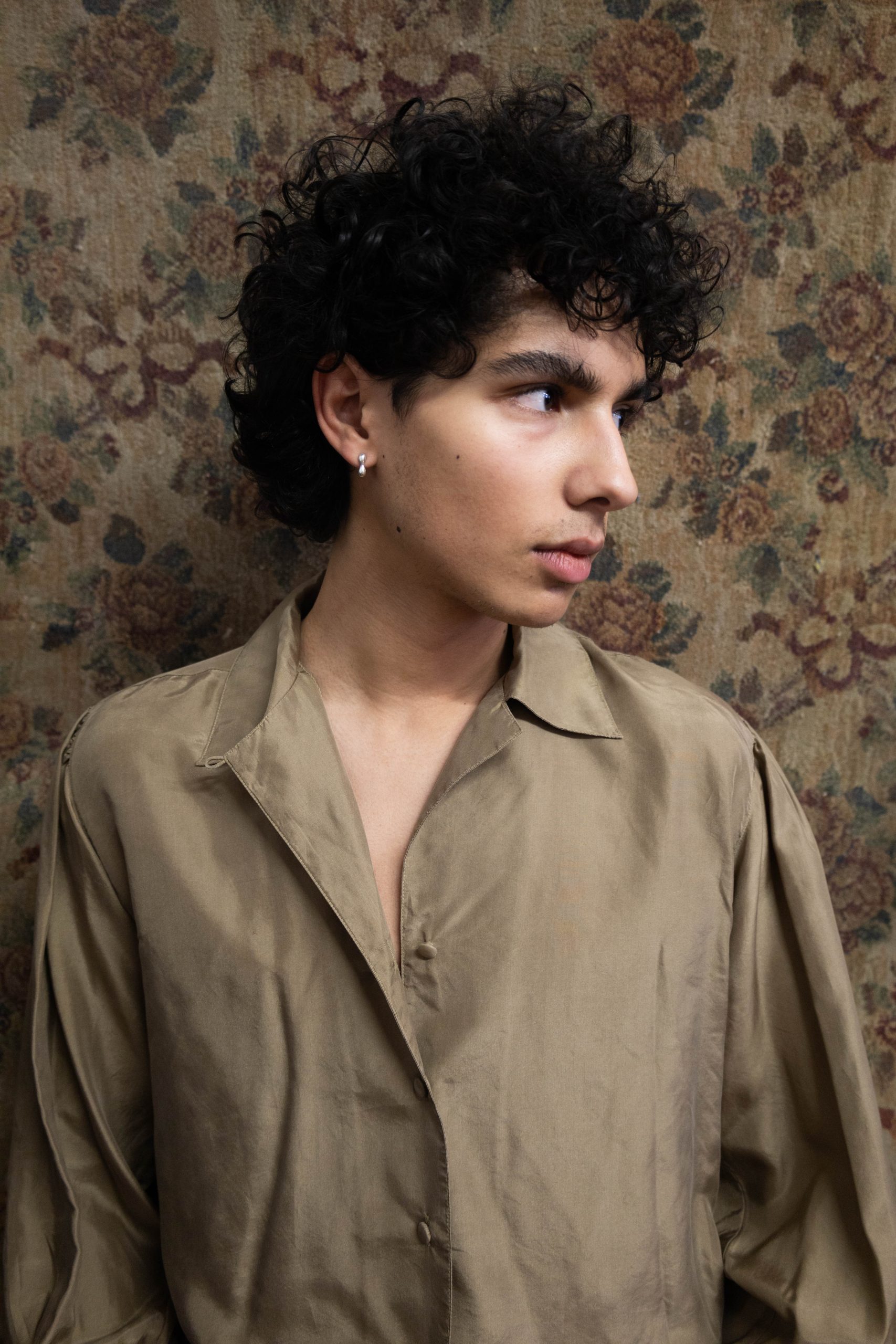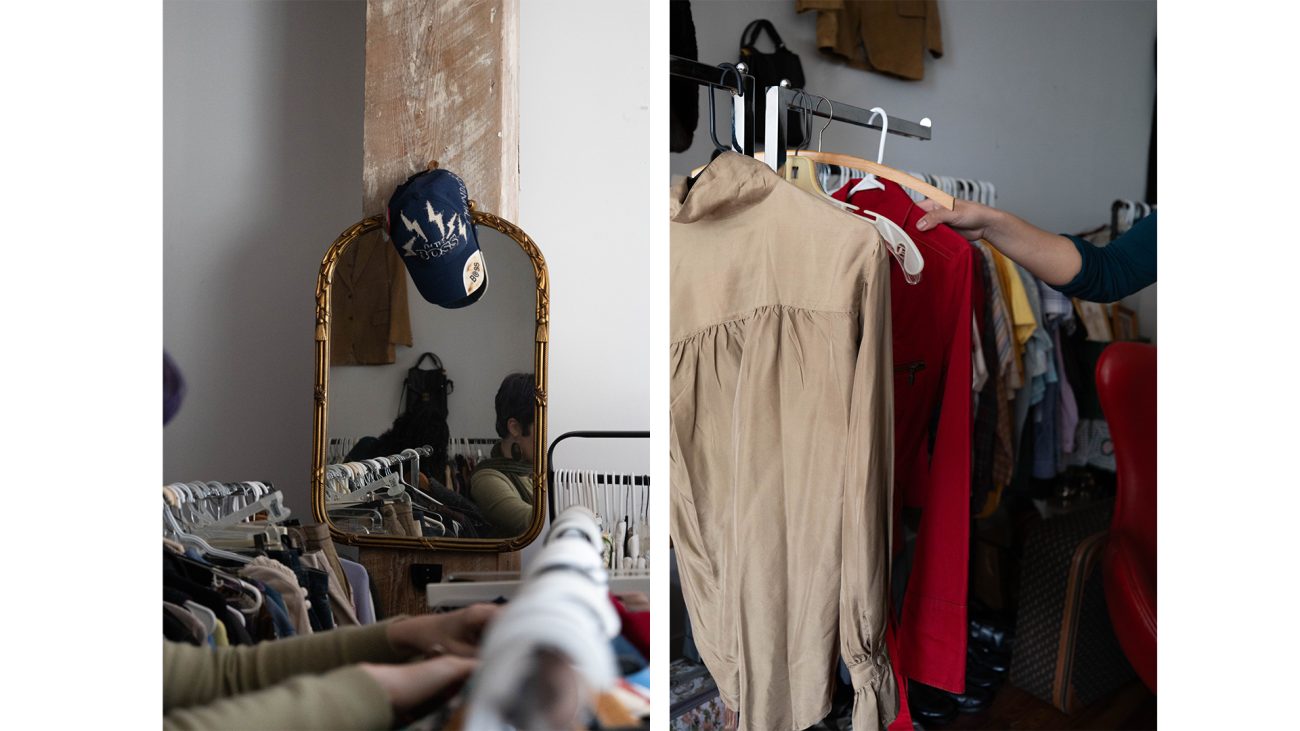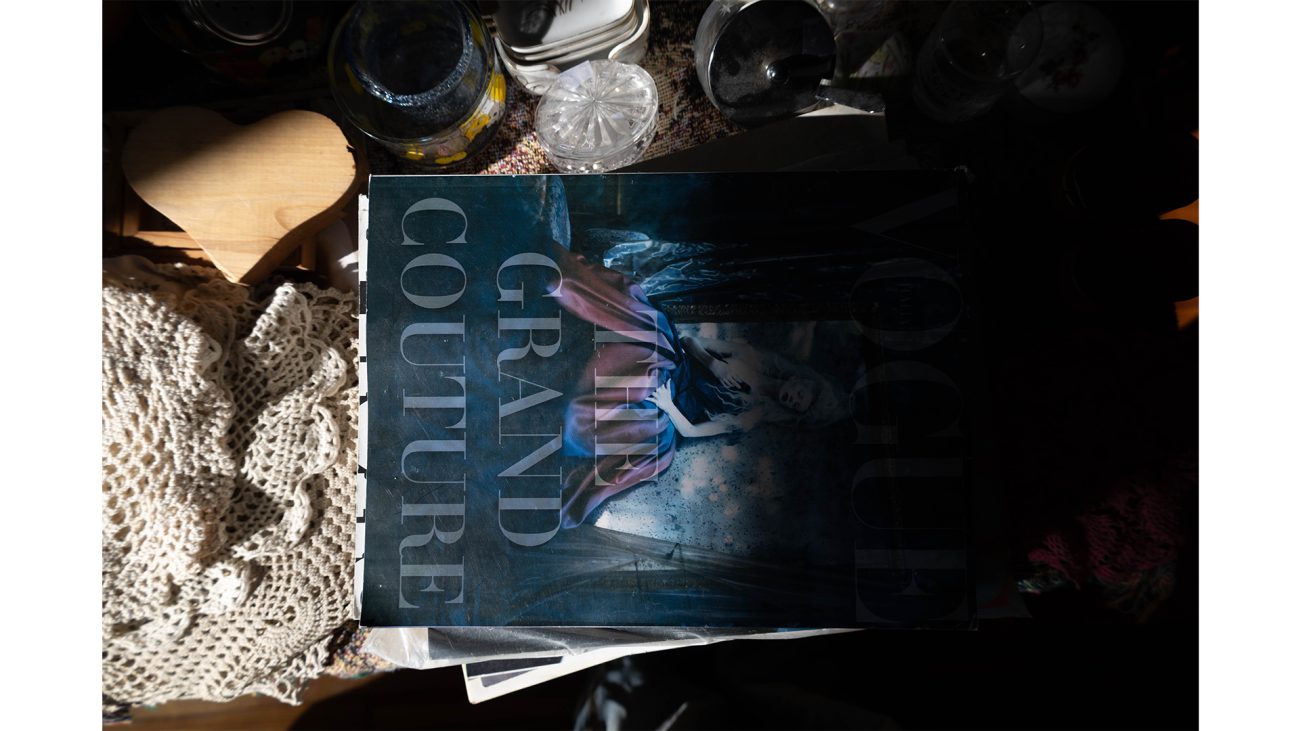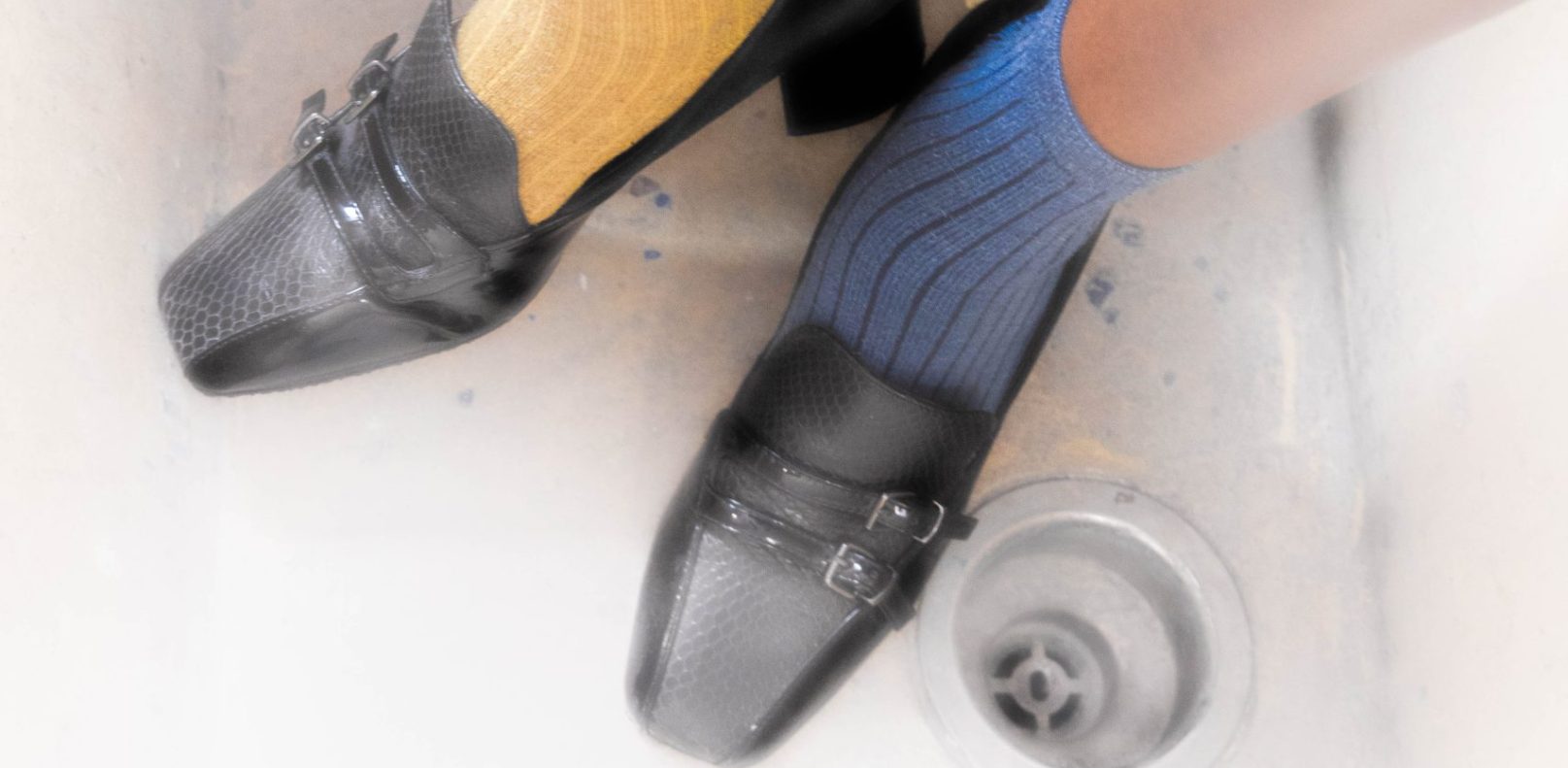Danny Colon on branding, breaking molds, and redefining vintage

Tucked away at the corner of Cook & White in Brooklyn—past the pigeons, nepo babies, and $30 zines about urban loneliness—lies the eighth wonder of the world: Electrix Vintage. The ninth wonder of the world is Danny Colon: an entrepreneur, fashionista, and exactly the type of person who makes success look inevitable.
I first met Danny when Electrix did a pop-up at the Ethereal fashion show in Manhattan. Even with the distractions of my first NYC fashion show—the glitz, the glamour, and whatever the hell a Doritos cocktail is—Danny and the energy surrounding Electrix cut through the chaos. Watching fashionistas sift through racks of perfectly curated vintage felt more like a spiritual experience than just shopping.
The next day, Ink Magazine had the opportunity to collaborate with Electrix on a photo shoot at their Brooklyn headquarters. It was tucked inside an industrial building in Williamsburg—the kind of obscure location I’ve come to associate with great things. If I’ve learned anything from living in Richmond these past four years, it’s that the more unassuming the entrance, the better the experience.
Electrix itself was a sanctuary—gorgeous wood paneling, trinkets everywhere. Danny describes it as “a grandma’s living room.” But the real centerpiece was Danny himself, and he was a joy to interview.
After basking in the glow of Electrix’s Brooklyn hideaway and chatting with Danny about the industry, I finally got around to asking him about the business. If there’s one thing I’ve learned, it’s that the best brands aren’t just selling clothes—they’re selling a universe. Electrix is no exception.
Turns out, sourcing vintage is one thing, but building a brand is a whole other beast.

Shoes From Electrix Vintage by Selah Pennington on February 8th
How would you describe Electrix Vintage as a brand, and what is its mission?
Electrix Vintage is an eclectic collection of vintage pieces ranging from the 1950s to the early 2000s. We carry a wide variety of products, but we specialize in preppier, cottage core-learning styles—blended with a touch of city edge.
Our mission is to bring vintage to a broader audience throughout NYC and beyond; to give young creatives opportunities to be part of the fashion industry and community; to infuse our retro vision into editorial and high fashion; and to expand our reach as much as possible.
We also aim to include charitable elements in everything we do—it’s a core pillar of who we are.
Was there a defining moment that inspired you to start Electrix Vintage?
Oddly [enough], not really. It was kind of an impulse thing. I’m usually a very planned person when it comes to education and work, but I just sort of started. Quarantine was like an incubator for my 15-year-old self to get creative and try new things—and vintage just stuck.
Have your studies influenced how you approach running Electrix Vintage, particularly when it comes to digital strategies?
Going to FIT has completely changed the way I promote and strategize with Electrix—and now Cook & White—but I’d also attribute much of that shift to our move to New York City as a whole. Our production quality has improved immensely, and my (new) team and I now have the resources to put together photoshoots and campaigns with my peers and other creatives across the city. I’ve been applying marketing and social media strategies from my classes, and more recently, I’ve been using insights from my product development courses to guide me as I begin creating my own product.
How do you differentiate Electrix Vintage from other vintage brands in NYC?
Besides our vintage being hand-curated by me to this day, we really try our best to stand out with the content we create. We try to get creative with photoshoots and collections to bridge the gap between high-fashion-style strategies and more affordable secondhand clothing. It’s hard to stand out in a very saturated vintage market like NYC, but we’re trying to innovate every day to bring our vintage and secondhand garments to a wider consumer range.

Looking Through Clothing at Electrix Vintage by Selah Pennington on February 8th
What’s your approach to curating pieces that align with your brand identity?
I think about a lot of things when sourcing vintage, whether it is from someone reaching out through our website or an estate sale meeting. I think about utility, current popular and referential styles, the season I’m buying for, and if a Gen-Z and older audience alike would be able to appreciate it, even if it is for different reasons. If a beautiful vintage coat has a difficult zipper, that could ruin the customer experience once they try to wear and style the product. Little details like that save our customers’ time and extra thought when purchasing from us. Right now, I love wide-leg, cottage, and preppy styles, and pieces with character.
Do you find that certain types of customers prefer shopping in-store versus online?
We have been through many ways of retailing throughout the history of Electrix: starting fully online, selling at flea markets, renting a small office space, then a retail store, and now a showroom. Throughout all of these, although our online audience is strong, we find customer response at pop-up shops will never be beat. The magic of vintage is touching, trying on, and “the hunt” that comes along with secondhand.
Have you found any unconventional strategies that work particularly well in New York’s fashion scene?
We find that pop-ups are a better way for us to sell than having a permanent retail location, although that is not out of the question for the future. Being able to test new markets constantly and not having the pressure to keep fully stocked racks at all times not only benefits us on the back end, but also allows us to curate a better selection for our customers when we have time to be selective.
Can you walk me through the product development process for the vintage-inspired collection? How does it differ from sourcing vintage pieces?
This vintage-inspired collection we are calling Cook & White has been in development for almost eight months now, from the first product concept to actual production. Product development is definitely new to me, but it’s something I’ve always dreamed of doing, even before starting Electrix, so it’s been coming naturally to me as we progress.
Are there any sustainability practices you’ve incorporated into your production process?

Assortments at Electrix Vintage by Selah Pennington on February 8th
I am proud to say that our sweatpants are made with deadstock French terry cotton. Deadstock fabric is essentially unused vintage fabric. We were able to save this fabric from potentially adding to the immense waste the fashion industry already causes and utilize it for our recently released drop.
What role do you think technology will play in the next generation of fashion entrepreneurs?
I think it opens up so many more amazing opportunities for young creatives and entrepreneurs. I started purely on Instagram, and although I branched out from there once I started to grow, that one platform did so much for me and my business.
If you could give one brutally honest piece of advice to someone trying to start a curated vintage shop in NYC, what would it be?
Doing your own thing and being confident and open about it will do so much more for your business than following everyone else. It may be easier initially to latch onto what everyone else in vintage is doing, but people are looking for other reasons—besides your fabulous curation—to buy from you rather than some other vintage or second hand store.
Conclusion
Electrix Vintage is more than just a brand. It is a testament to the power of curation, community, and refusing to blend in. In a city overflowing with vintage shops, Danny has built something that feels personal and magnetic. Electrix is not just about selling clothes; it is about creating a world where people want to belong.
Watching Danny in his element, it is clear that his success is not a matter of luck but of vision. He understands that fashion is about more than trends—it is about identity, storytelling, and making people feel something. The best brands are the ones that convince you they have always existed, and Electrix is already there.

